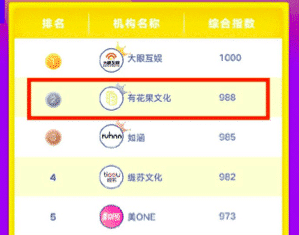China’s Key Opinion Leader (KOL) landscape can seem like an endless vortex of options, and so to understand the KOL world means having a handle on the growing management phenomenon that essentially makes up its core: Multi-Channel Networks (MCNs).
In China, the MCN ecosystem is thriving—there are thousands of MCNs in China, and that number is still growing. According to Qianzhan Report, the number of these networks was nearly 5,000 in China, three times the amount in 2017.
By 2019, that number grew to 20,000, which was four times the amount of the year before. Though the exact number of MCNs in 2020 hasn’t been released yet, iiMedia estimates that it was 28,000.
While MCNs can help consolidate KOL resources across platforms, their pervasiveness generally means that it can be difficult for brands to work with KOLs without going through an MCN first. It is such a lucrative market that some of the top KOLs in China create their own networks, such as AnnyFan, Becky’s Fantasy (黎贝卡的异想世界) and Yuanlaishi Ximendasao (原来是西门大嫂).

Ximendasao’s MCN Fruit Blossom ranked #2 on the Weibo Beauty Video Ranking Board in March 2021.
In this article you’ll learn…
How Chinese Multi-Channel Networks Work?
The MCN relationship in China is a symbiotic one that relies on a web of partnerships: the network works with the Social Media platform to attract new followers, usually recommended by a platform based on their algorithms. Then the MCN provides the platform a pre-screened batch of KOLs and content, and helps the KOLs with professional resources to improve their content. Resulting in the KOLs gaining new fans; and the Social Media platform can grow their traffic. The goal of the MCN is to grow their own Influencer network so that they can boast a huge, but ultimately aggregated, the number of followers.
There are three steps to the breakdown of how MCNs work in China. First, they sign contracts with KOLs. Two types of KOLs will be covered. One is KOLs that have already grown their fan bases and the others are everyday people, whom MCNs will develop to be a KOL. After signing the contract, the next step is to source professional content creation teams to help KOLs output content.

The last step which is also the most important one is monetization. KOLs who have signed contacts with MCNs can’t have sponsorship without permission from the networks. While the typical MCN is going to have hundreds of KOLs, they can vary greatly in size, from an elite group of people that are signed to one company, to smaller groups of KOLs that work together. Some have their own specialties—i.e., one will work with fashion vloggers, another will work food KOLs on Weibo, etc.
Here’s why it benefits social media platforms:
MCNs allow Social Media platforms to move away from employing KOLs directly and focus on other areas of their business. Over the summer of 2018, Douyin became one of the latest major Social platforms to create an official channel for MCNs after months of working with KOLs on a one-on-one basis. Xiaohongshu also works with several major Multi-Channel Networks to manage its “brand verified” KOL community after tightening its regulations for sponsored posts in 2019, creating a “brand verified bloggers” platform to monitor brand and KOL partnerships.
Attracting high-quality KOLs is also equals to bringing traffic to Social Media platforms. For example, a buzzed-about gossip in early 2020 was a mature financial account called Wushi Caijing (巫师财经) signing contract with Watermelon. The account originated from Bilibili and had 2.7M followers on the platform.
MCNs also help Social platforms to generate higher commercial values. According to New Times Securities, this is how networks make connections with everyday people and ultimately sign contracts with them.
Those top MCNs have job interviews with 800-1000 people every month, and they select only 1% of them to be trained and developed over the next three to six months. After those people pass probation, they will officially sign contacts with these networks. Even for people without any fan base at the beginning, it only takes 8-12 months for those KOLs to get sponsorship deals. By attracting these MCNs, Social Media platforms will have more commercial collaborations with brands that come with the arrival of those MCNs, generating higher commercial value for those platforms.
What do KOLs have to gain?
For KOLs just starting out, MCNs are generally an attractive option as they will offer an opportunity for Influencers to more quickly grow their follower base, and in the long run, networks also assist KOLs to map out their next career moves.
Growing an Influencer without the support of an MCN is a rare accomplishment, as a unique combination of talent, connections, and business savvy are required to grow an Influencer in China.
A good example here is Li Ziqi (李子柒). She is a Chinese food and country-life blogger and entrepreneur. Her videos are about creating food and handicraft preparation by using basic ingredients and traditional Chinese techniques. What’s impressive about her is that, she is not only very well-known in China (Weibo follower: 27.5M), and she’s also popular internationally with 15.3M YouTube followers.

In 2014, Li started her vlogger career. At first, her equipment was very simple: a digital camera and a tripod. After filming, she edited videos on her mobile phone and published them on Meipai (美拍).
Li kept growing her fan base and she signed with an MCN called Wei Nian (微念) in 2016. The MCN provided her with better filming equipment and the quality of her videos was greatly improved. The network team also worked with different Social Media platforms and guided traffic for Li. In 2018, the number of Li’s Weibo followers broke 10M.
Growing a fan base is the first step. Except for planted advertisement, Wei Nian discovered further commercial value of Li by helping her open a flagship store on Tmall. The store covered instant food and snacks. Three days after it was launched, its sales surpassed 10M RMB with only five products by then.
Why should brands work with a Chinese MCN?
Working with Chinese Multi-Channel Networks reduces costs for brands. MCN will generally get traffic package deals with the Social platforms. Some sell their year-long traffic packages to MCNs at half the price of what they would sell to an individual KOL, knowing that KOLs can only reach about 10 percent of their audience organically.
MCNs save time for brands, and on most occasions, networks know the type and follower demographics of their KOL’s better than brands do. After briefing MCNs on your brand and what customer you would like to target, they can match you with KOLs quickly, however, brands still need to carry out their own research on the KOLs that MCNs suggest to them.
Another benefit, which often goes unnoticed, is that MCNs reduce the risks for brands working with KOLs. The MCNs make connections to those that are recognized within the industry, as there are some fake companies that are involved in massive fraud and so all parties involved must take care. For brands working with individual KOLs, if anything unexpected happened, such as the KOL can't conduct their livestream content due to sickness or any other reason, then network's are very useful for managing the situation and finding a replacement or another solution to compensate brands.
The dark side of China Multi-Channel Networks
While working with an MCN can simplify a KOL relationship, there are a number of other risks both for KOLs and brands when it comes to working through Multi-Channel Networks.
KOLs often don’t receive fair payment from MCNs and this has resulted in many KOLs terminating relationships with them.
There is a saying in the KOLs industry that, a few years ago, KOLs were busy signing contracts with MCNs and now they are busy terminating their collaboration. Lin Chen (Bilibili: @林晨同学), a vlogger that become well-known because of the videos he shot during the Wuhan lockdown, sued his previous MCN Bucha Lvxing (不差旅行).

He took legal action because the network asked him to insert advertisements in his Wuhan videos, but Lin thought those videos were not suitable for commercial use. The MCN said if he didn’t do so, he would have to pay 3 million RMB for the penalty. Lin was not the only victim of those unfair regulations set by some of the MCNs, there were other KOLs also expressing that they were not being treated well. Some were brave enough to expose their experiences publicly, while others paid a large penalty amounts and cut ties with their network.
On the other hand, the risk for brands to work with Multi-Channel Networks is that they may get low-quality content creators, sourcing KOLs that don't necessarily best represent the brand, instead they might be chosen just for the high number of followers they have. Which means brands might not see results like sales conversions for a long time.
Since it’s nearly impossible to avoid working with a Multi-Channel Network in China when it comes to KOL marketing, and the market is still in an early developing age, brands really need to do their own research and learn which MCN can be trusted before reaching out.

